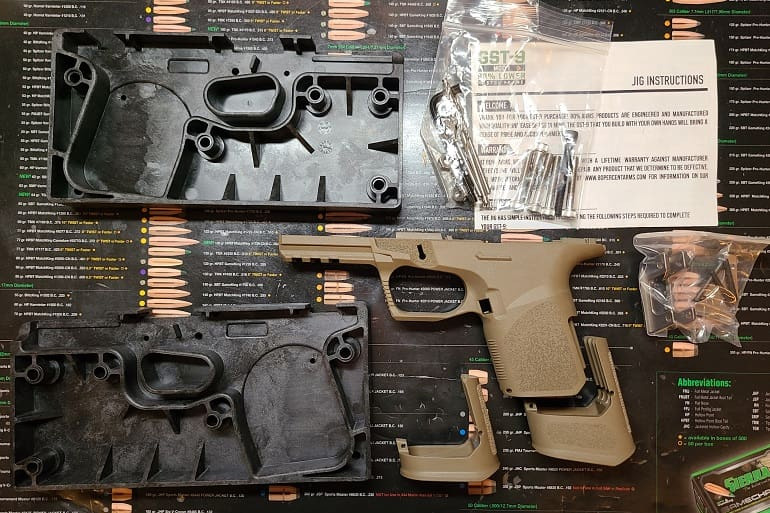
For more than a decade, I have proudly represented Defense Distributed in a wide range of matters. Most of these cases have ended in defeat. Yet, I do not feel defeated. In case after case, courts have recharacterized our complaints, distorted the usual rules about venue, refused to rule on issues that were plainly presented, and other shenanigans. In 2020, I wrote about early chapters of the litigation. And one day, I may write a book about this never-ending saga. For now, it is enough to say that Bondi v. VanDerStok is the latest chapter in this book. But wait–no such book about this case actually exists. And artifact nouns be damned, no firearms exist in this case either.
Reading this decision was a frustrating experience. I am intimately familiar with how this case was litigated since the outset. Yet, the Court’s approach to the case was completely foreign–so foreign, in fact that it would be unrecognizable to the lawyers and judges who adjudicated the case below.
I echo Steve Halbrook’s post:
That characterization [of the Plaintiffs’ case] is hard to square with plaintiffs’ briefs in the Supreme Court. . . . Justice Alito was therefore correct to state in dissent that the Court’s treatment of plaintiffs’ arguments was “unwarranted and extremely unfair.”
Also unfair was the Court’s twisting of a supposed “concession” made by counsel at argument—that they had no “quarrel” with the ATF’s prior practice of regulating certain unregulated frames or receivers that had reached a critical stage of manufacture. But as the argument transcript makes clear, that concession was made with respect to the argument that plaintiffs should still win even if the GCA covers some unfinished frames or receivers—i.e., the argument the Court refused to consider. See Tr. at 59, 84. Whatever the reason, the Court chose to engage only a caricatured version of plaintiffs’ arguments. …
[T]he Court included several photographs to demonstrate what the kits look like. And Gorsuch offered this analysis:
Plainly, the finished “Buy Build Shoot” kit is an instrument of combat. No one would confuse the semiautomatic pistol pictured above with a tool or a toy. Of course, as sold, the kit requires some assembly. But a number of considerations persuade us that, even as sold, the “Buy Build Shoot” kit qualifies as a “weapon.”
Back in the day, the Court would determine whether a film was obscene by watching it. Here too, the Court adopts a “know-it-when-you-see-it” approach to determine whether a kit qualifies as a “weapon.” Justice Stewart would be proud.
Recently, Judge VanDyke of the Ninth Circuit made headlines by demonstrating how firearms work in a YouTube video. Is what Gorsuch did that much different than what VanDyke did? In both cases, the Court was trying to demonstrate how firearms function. Visuals help. Then again, Judge VanDyke, as well as Judge Oldham, are actual experts on firearms who would easily pass the Daubert test. I would take their characterization about guns far more seriously than anything [former Solicitor General] Elizabeth Prelogar wrote. I am highly doubtful she ever tried to fire the gun the former Solicitor General allegedly made. It may be easy enough for a novice to “drill some holes,” but good luck using it safely and effectively.
— Josh Blackman VanDerStock is NetChoice Redux: A Sharply-Divided Court Threads The Needle With A “Facial Challenge” Analysis


“But a number of considerations persuade us that, even as sold, the ‘Buy Build Shoot’ kit qualifies as a ‘weapon.’ ”
But if its not a kit then its not a ‘weapon’ ?
At what point does it become a ‘kit’?
If it doesn’t include the jigs when sold, or the jigs are purchased separately, is it a ‘kit’ and weapon?
According to 80PercetArms in explaining the change > https://www.80percentarms.com/ATF-RULE-FAQ/ :
“Based on our reading, the Supreme Court’s decision in VanDerStok v. Garland does not outlaw 80% AR lowers.
The ruling specifically addressed the ATF’s authority to regulate certain weapon parts kits and partially complete frames or receivers, primarily focusing on pistol build kits, like Polymer80’s “Buy Build Shoot” kits, which include everything needed to quickly assemble a working handgun.
This decision does not automatically ban 80% AR lowers when sold on their own without jigs.
The fight is ongoing, and there’s still room to challenge how the ATF applies this rule to specific products but to be clear:
AR lowers are not banned.
This ruling does not apply to all 80% products.
It primarily impacts 80% pistol frames bundled in kits.
76% Frames are still available on our website”
So according to that, as long as its not bundled in a kit its not a ‘weapon’ under the VanDerStok v. Garland decision. So, for pistol, break it up so not everything is bundled in single ‘kit’
Anyway, this ruling it seems (maybe) may not apply to the individual but rather an actual manufacturer or an FFL license holder meaning if you have a ‘kit’ you are free to go ahead and build it?
Armed Attorneys discussed it here > What are your rights now? SCOTUS Betrayed the 2A on Frames and Receivers > https://www.youtube.com/watch?v=BHmHhX3X78E
This was my concern as well, and my take on it as well. I’m waiting for more details to emerge.
can ya get my comment out of moderation please. thanks.
ahhh… there it is, thanks.